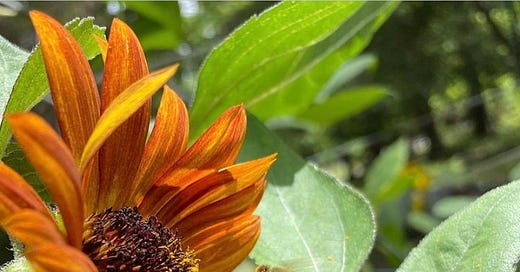Forage to help bees control varroa mites
Thyme essential oil usually gets the spotlight when it comes to managing varroa, but another plant’s pollen shows promising support.
Commonly available varroa mite treatments like Apiguard, foggers, and some paper towel methods lean on thyme essential oil for managing varroa mites (Varroa destructor) in honey bee colonies. Essential oils are highly processed, condensed plant-based products. The efficacy and strength of an essential oil isn’t comparable to the natural state of the same plant’s pollen and nectar. While thyme can be a lovely forage for honey bees and other pollinators, it may not produce the same results as when using the refined essential oil version.
Also, a 2021 study in INSECTS confirmed that peppermint, manuka, and oregano essential oils, among other oils, were more effective in killing varroa in a controlled setting. Field studies remain to be seen.
However, research from the past few years shows that we have a promising varroa management option when adding forage for honey bees. THE JOURNAL OF ECONOMIC ENTOMOLOGY published research that shows that sunflower pollen reduced varroa mite populations in honey bee colonies. The research showed that doubling sunflower forage near honey bee colonies prompted a varroa mite drop of nearly a third. Particular improvement surfaced near the end of the summer season and dropped mite numbers by 2.75-fold.
Sunflowers popped up in my earlier post about summer forage for me and the bees. I prioritize sunflowers in my garden because of their multiple uses and benefits. To me, they’re the garden’s Swiss Army Knife. Soil aeration, toxin removal, prime pollen production in a small space, seed production for humans or wildlife, and their stalks can be repurposed at the end of the season for future plant support. Now they earn another badge as helping to manage varroa mites.
When choosing sunflowers for your yard or garden, make sure the variety isn’t pollen-free. Many people choose to grow pollenless sunflowers in their gardens because they use them for cut flower arrangements. The other trait to look for is multi-headed. Some sunflowers grow and produce a single flower, then die back. Other varieties are multiheaded, so they produce more forage in the same space. They continuously grow new flower heads throughout the season.
Another perk of sunflowers is that you can succession sow them. Throughout the frost-free growing season you can re-sow sunflowers weekly, every other week, or monthly. Some varieties bloom within 55 days. Check the variety and your first frost date, then count back and you could sow sunflowers that late in the season. You can also utilize them in areas that are lying fallow or that you plan to use in another season. For example, if you’re reserving some space for winter crops, keep sunflowers succession sown there throughout the warmer season. When fall rolls around you can interplant winter crops between the sunflowers since the sunflowers will die back with the first frost.
Some of the sunflowers I love to grow:
Autumn beauty
Arikara
Lemon Queen




